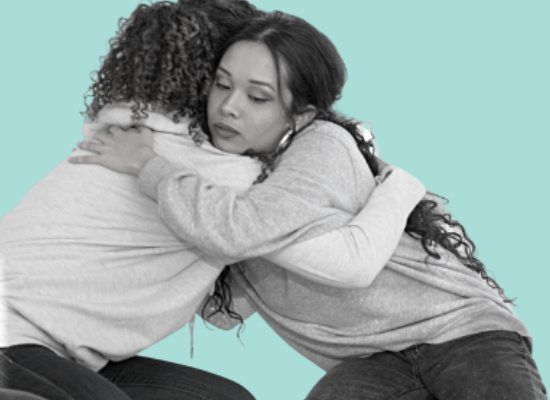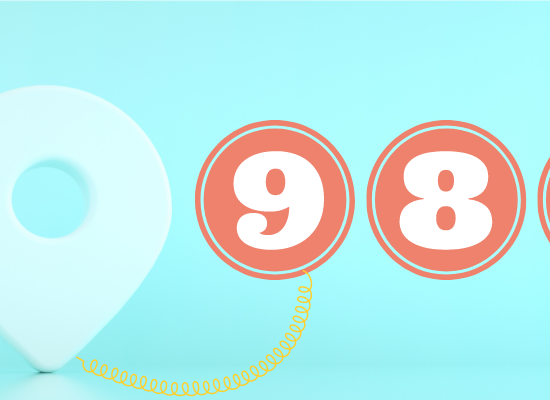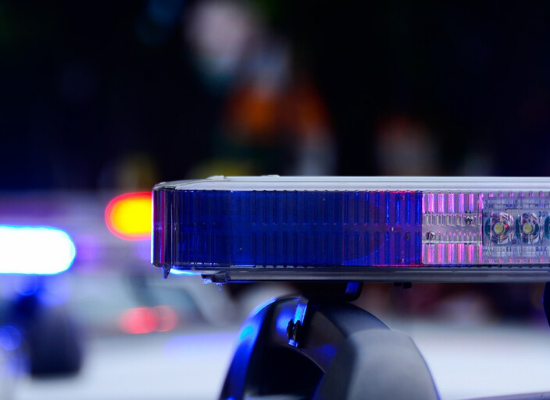
Stephanie Hepburn is a writer in New Orleans. She is the editor in chief of #CrisisTalk. You can reach her at .
Steve Hamerdinger says living as a deaf person is an ongoing, exhausting battle for respect and to be understood. When he was young, his parents didn’t permit him to learn sign language. “They didn’t allow me to interact with deaf people,” he says. It wasn’t until he dropped out of high school that his world shifted. “I was 16—the age where I could no longer be forced to go to school, and I refused to go to a classroom where I couldn’t understand anything that was going on.” Today, Hamerdinger is the Office of Deaf Services director at the Alabama Department of Mental Health.
His decision to drop out of school angered his parents. “We had a ‘conversation,’” he says. It was more like a lecture, he clarifies. Hamerdinger doesn’t remember much about what transpired—after all, it happened decades ago. However, he recalls his mother saying, “I love you, but I wish you weren’t deaf.” The latter reflects a sentiment heavily woven into nearly every aspect of a deaf person’s life as they navigate a society that prefers not to deal with them, including within education and healthcare systems. “At best, we’re an afterthought,” he says.
There’s a dearth of research on the prevalence of mental health and substance use disorders among deaf people. However, the rate of diagnosed depression or anxiety is 25% higher and occurs at an earlier age for deaf adults. Also, in a 2019 study, researchers found that 33% of deaf participants reported a lifetime history of alcohol use compared to 12% of those who weren’t deaf.
Communication is vital for behavioral health crisis intervention, accurate diagnosis, treatment, and follow-up care. It seems obvious, but Hamerdinger notes it’s common for deaf people not to have adequate access to communication. For example, he recently had a surgical procedure. On the surgery date, he arrived at the hospital to find there wasn’t an interpreter. (He says the shortage of interpreters was a pre-existing issue that has worsened during the Covid pandemic.) The stress of not being able to communicate made his blood pressure rise. “It was 160 over 120,” he says, “when normally it’s about 117 over 80.” The physician nearly canceled the surgery. Hamerdinger points out that people rarely understand why the absence of an interpreter is problematic. “How would they feel if they had a medical emergency while out of the country and no one spoke their language?” he asks. “That’s what I was experiencing.”
In most communities, navigating a behavioral health crisis system as a deaf person isn’t any easier. Hamerdinger emphasizes that’s why 988-National Suicide Prevention Lifeline accredited call centers must have a deaf-specific option. “We need immediate access to a call counselor who is ASL fluent,” he says. “A person in crisis shouldn’t have to depend on an interpreter to convey their feelings.” If there isn’t a deaf-specific option, Hamerdinger worries many deaf people won’t reach out. Telecom companies must direct calls and texts to the three-digit number for mental health, substance use, and suicide crises by July 16, 2022.
As with any language, incorporating an interpreter—especially one who isn’t trained in behavioral health—results in a game of Telephone, opening the door to profound misinterpretation. “As a therapist, I have to worry, ‘Am I getting what the person said or what the interpreter thought the person said?’” notes Hamerdinger. The shared experience, if both the provider and the person they’re assisting are deaf, also helps foster trust. Additionally, a well-trained ASL-trained counselor will know that some deaf callers have grown up in an impoverished language environment. “That creates a sizable space for misunderstanding,” he says. The person might have gaps in vocabulary or grammar, resulting in informational deficits that can appear as if the person’s experiencing psychosis. “An interpreter who doesn’t understand this will try to make sense of what they’re seeing.” That means they’ll either try to guess what the person is saying or interpret halted language without context: that the person doesn’t have sufficient vocabulary to describe their experience.
The hope with 988 is that call centers will stabilize the vast majority of callers but also that the momentum pushes communities to scaffold comprehensive services in line with SAMHSA’s national guidelines: regional or statewide crisis call centers that coordinate in real-time, centrally deployed 24/7 mobile crisis services, 23-hour crisis receiving and stabilization programs, and essential crisis care principles and practices like “no wrong door,” a no-refusal drop-off policy for patients in need. Communities must develop each, points out Hamerdinger, with marginalized, underserved populations in mind, including deaf people. “At the moment, only a handful of states can address the deaf community,” he says. “Most depend on ad hoc arrangements.”
While Hamerdinger believes call centers must provide immediate access to ASL-trained counselors, doing so for in-person mobile crisis services isn’t viable in most communities. “Even in Alabama, where we have a very well-developed continuum of care for deaf people, it’s unrealistic to expect that we have ASL fluent providers all over the state who are available at any given time,” he says. That’s where telehealth technology can play a vital role. “Using a centralized service would allow mobile crisis teams to ‘bring’ an ASL-trained mental health counselor—or at minimum, an ASL interpreter trained in mental health—with them on a tablet.”
However, if a person needs 23-hour stabilization, Hamerdinger points out that communication can’t solely be accomplished through a tablet. “There must be a deaf-friendly facility where people can go,” he says, “where staff and consumers all sign.” Deaf people in crisis need a place to go that doesn’t overlook deafness. He’s working to develop just that in Alabama, which will most likely be based out of a state-operated behavioral health center in Tuscaloosa that can provide 23-hour stabilization, short-term admission, and long-term stay. “We can do this,” he says, “because our department supports a deaf appropriate crisis continuum of care.”
Most states won’t be able to pivot to providing a deaf-friendly crisis continuum as quickly as Alabama, so they’ll need to build out their system of care. That begins with leaders asking how their state, region, or community will provide deaf people access to care. “Are they going to assign specific interpreters to help develop and expand the crisis system and ensure they’re mental health trained?” Hamerdinger asks. “Or are they just going to rely on video relay systems?” The latter has inherent pitfalls and results in inconsistent interpreter training, making misinterpretation far more likely. “It’s a gamble,” he says.
As communities expand and reframe their crisis system, Hamerdinger notes that deaf leaders should be on advisory and planning councils for 988. If they’re not part of re-engineering the system, their needs will continue to be marginalized. “The deaf community has no reason to trust the behavioral health system,” he says. “Throughout history, it’s deliberately oppressed us.” The 988 momentum is an opportunity to change that. “It’s time to build trust and give us equal access to care.”









